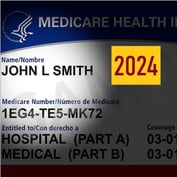What You Need to Know
- A reverse rollover can allow clients to minimize taxes on a Roth conversion or avoid RMDs once the client hits their required beginning date for the IRA.
- Clients rolling an IRA into a 401(k) may have more limited investment choices and fewer penalty exceptions.
- As with any retirement income planning strategy, it’s important to consider the individual client’s unique situation before executing a reverse rollover.
In the typical case, clients are interested in rolling 401(k) funds into an independent IRA, whether because they are changing employers, retiring or simply want more control over their retirement funds. However, there may be situations where a client can benefit from a “reverse rollover” strategy, where funds are moved from an existing IRA into an employer-sponsored 401(k).
Clients who are interested in executing a Roth conversion in today’s down market may be particularly attracted to the reverse-rollover strategy, as it can allow the client to minimize taxes on the conversion — or even avoid required minimum distributions (RMDs) once the client hits their required beginning date for the IRA.
Reverse Rollovers: The Basics
As an initial matter, the reverse-rollover strategy only works if the specific 401(k) plan in question accepts rollover contributions. While all employer-sponsored plans are required to permit participants to roll funds out of the plan and into an IRA, the reverse isn’t true — some 401(k)s may not accept rollovers at all. Clients should check with their plan administrator to determine whether their 401(k) allows rollovers.
Additionally, the client is only permitted to roll pretax, or deductible, IRA contributions into the 401(k). So, if the IRA contains both deductible and nondeductible (after-tax) contributions, only the pretax dollars are eligible for rollover to the 401(k). Similarly, Roth IRA funds cannot be rolled over into a traditional 401(k).
Clients can roll over their entire deductible IRA balance into a 401(k) without limit.
Tax Benefits and RMD Exceptions
There are many different reasons why a client might wish to roll IRA funds into their company-sponsored plan. If the client has reached age 72 and is still working, rolling IRA funds into the employer plan can allow the client to avoid or minimize RMDs under the “still working” exception for 401(k) RMDs (the client can only take advantage of the still-working exception if the client doesn’t own more than 5% of the company and the plan allows delayed RMDs).
A reverse rollover can also help reduce the client’s tax bill if the client is interested in executing a Roth conversion. Typically, the pro rata rule requires the client to consider both deductible and nondeductible IRA contributions that exist as of Dec. 31 of the year of conversion when funding a backdoor Roth using the conversion strategy.









 June 10, 2022 at 01:44 PM
June 10, 2022 at 01:44 PM











